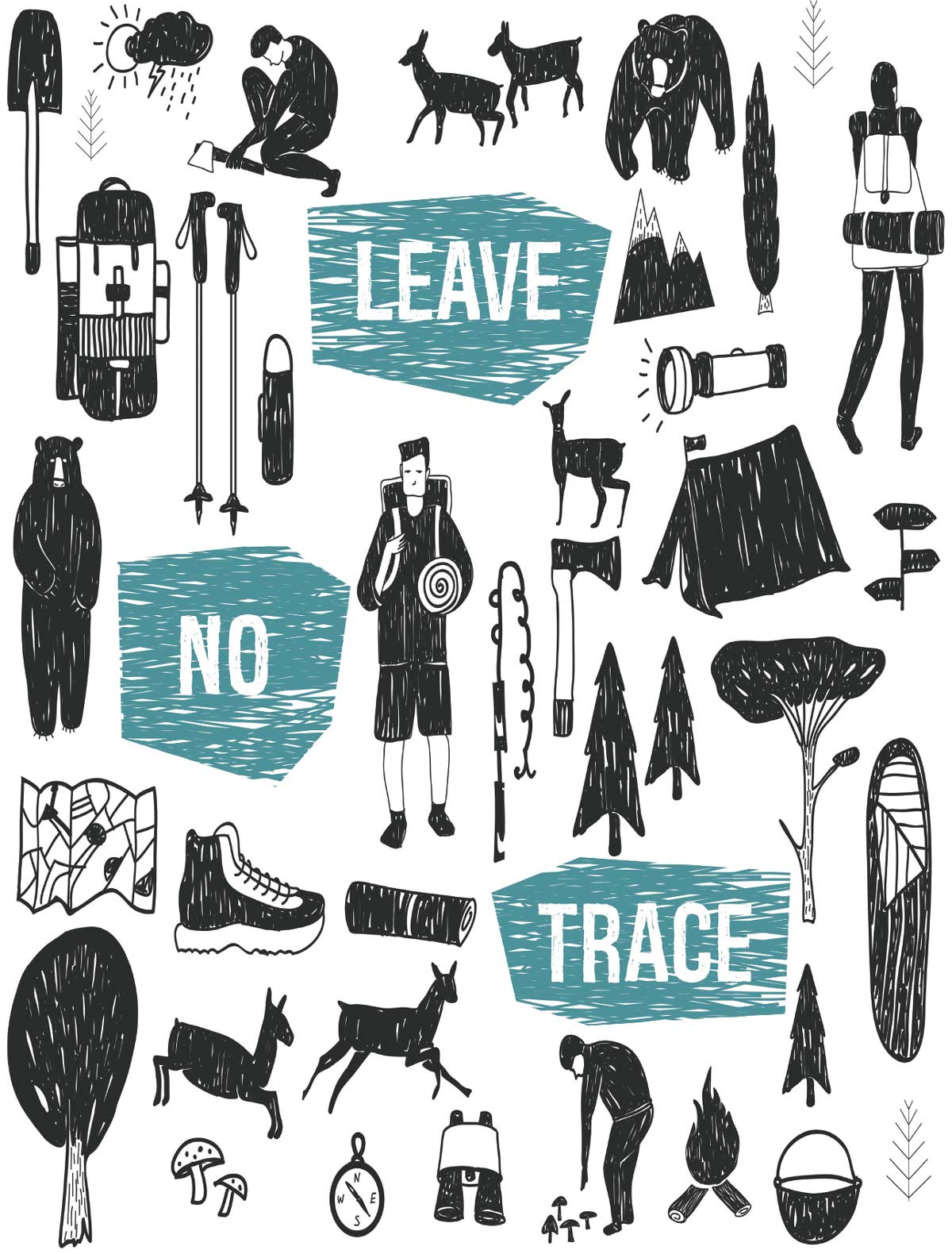
I often tell people that the worst thing that ever happened to me regarding this faux pas, was that nothing ever happened to me. Meaning, I never had a critter come into my tent and steal my food, and I never had to deal with the unintended, albeit gross, consequences of my shallow catholes. Or at least, I’m unaware of the negative consequences because I had places to be, Katahdin specifically
In hindsight, I got lucky, and I have since learned that my choices could have led to negative experiences for those who came after me. What really put things into perspective for me was two years after my thru-hike, I got bluff charged by a bear and had over $4,000 worth of collective gear destroyed in our group campsite in the Smokies. The scary part was that our group was practicing Leave No Trace to a tee. Yet this bear was acclimated to the point of aggression because he had associated our site with leftover food, or perfectly toasted snacks haphazardly left behind in a firepit from hikers who came before us.
It got me thinking. How many people suffered the negative consequences of my choices during my thru-hike? Unfortunately, I’ll never know the answer to that question, but now I can help people start to think about these types of questions before they begin their journeys on the A.T.
To practice Leave No Trace while hiking is to practice decision making. While I hear people expressing that they go to the outdoors to “get away from it all,” the responsibility of making decisions is not something anyone can escape when they go outdoors. Leave No Trace is a part of every decision we make from the time we decide we want to go outside to the time we get home and call it a day. For example, where am I planning to hike? Is this an overnight hike or a day hike? What will the weather be like? How much food do I need? How will I go to the bathroom along the way?
I start every Leave No Trace training with ground rules ensuring a safe space, then pose the question about our Leave No Trace faux pas. I believe that this starts off any training with a sense of equilibrium. While I assume that most people have at least heard of Leave No Trace before they set foot on the A.T., I rarely meet people who can recite all seven principles without having attended some formal training, and that’s understandable.
That’s because no one is born knowing Leave No Trace, especially if your upbringing doesn’t involve adequate access to the outdoors. The good news is that every single one of us starts off as novice, and no one has all the right answers (this includes Leave No Trace master educators). Even without formal training, the principles of Leave No Trace are really just common sense.
Typically, when I challenge people to do this exercise, they are surprised with how close they got to the official list. Like I said, common sense. My goal is for A.T. visitors to see how the choices we make aren’t necessarily right or wrong but fall on a spectrum regarding the amount of positive or negative impact on the Trail.
For example, when we decide to go on a day hike, we can choose whether to bring a trash bag with us while we hike, or not. If we choose to bring a trash bag, then we’re able to pack out the trash from our snacks and lunch, which falls on the less impactful side of the spectrum. If we choose to forgo our trash bag, then we may be tempted to throw a banana peel into the woods inviting critters to nibble on our leftovers, inherently changing the wild behavior of that animal. Thus, the opposite end of the spectrum.
If we make the decision to not read the signs at a park entrance kiosk and allow our dog to be off-leash, then we are actively choosing to not be considerate of other visitors. A campfire that is not tended or extinguished could lead to a wildfire. And improperly stored food can lead to campsite and shelter closures and bears being euthanized.
Our decisions are our choices; some have a greater negative impact than others.

